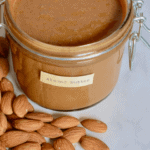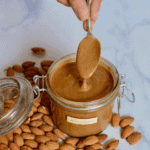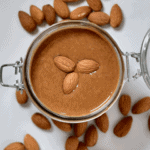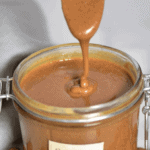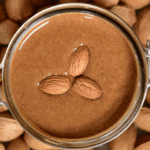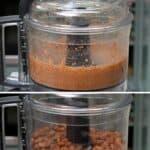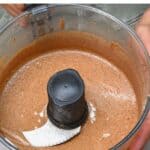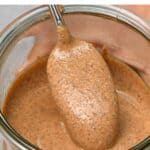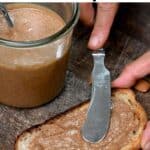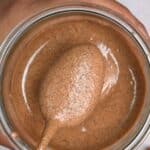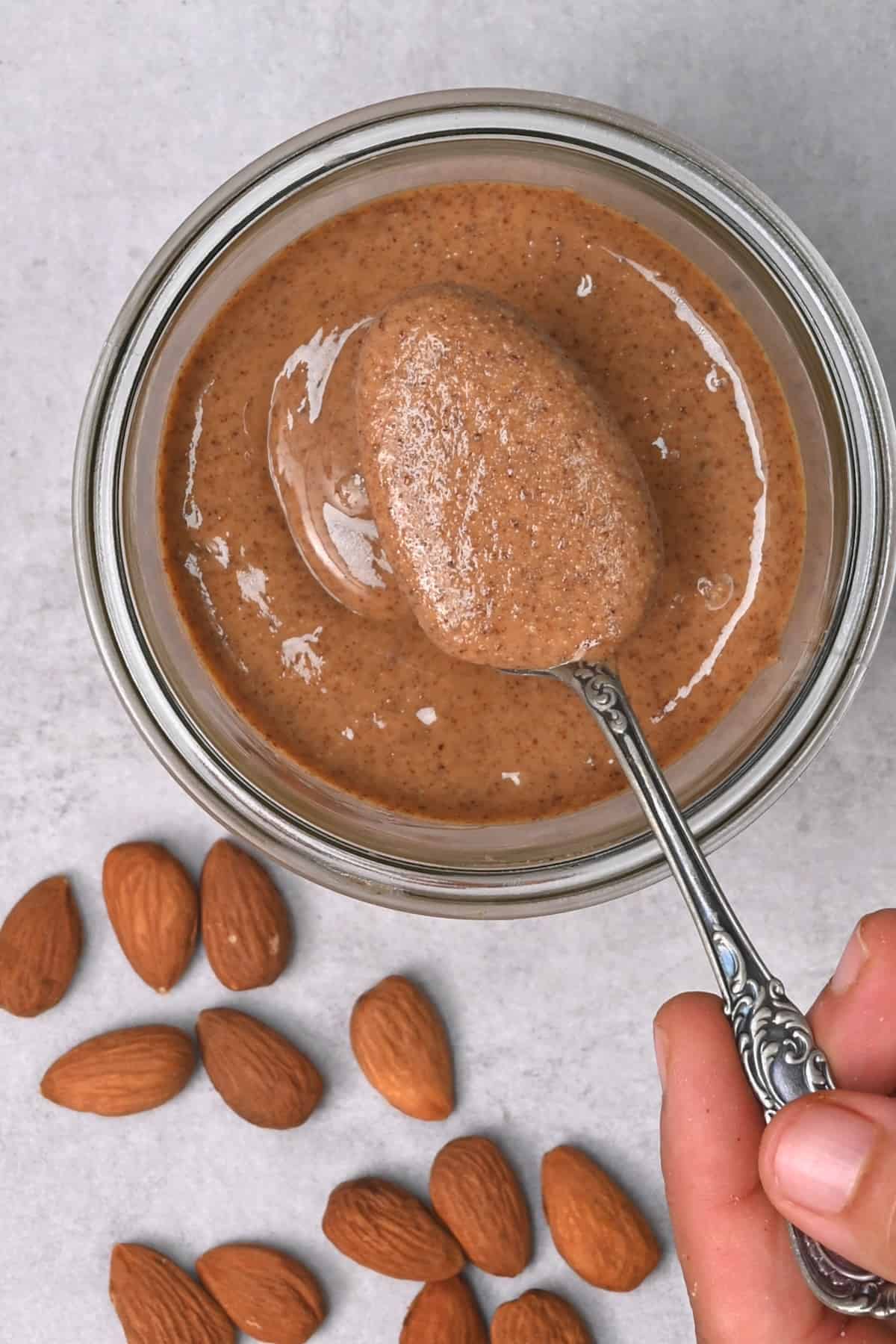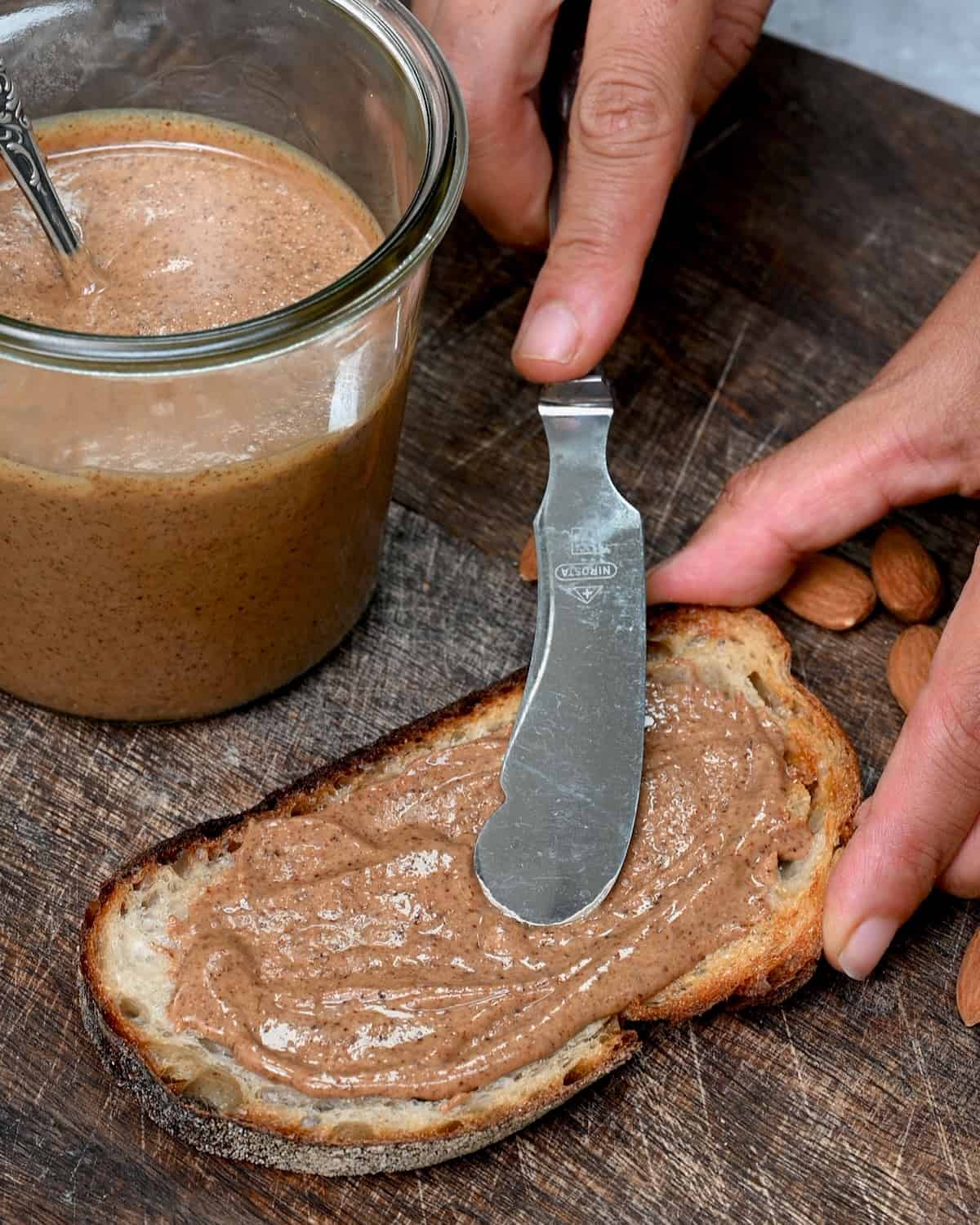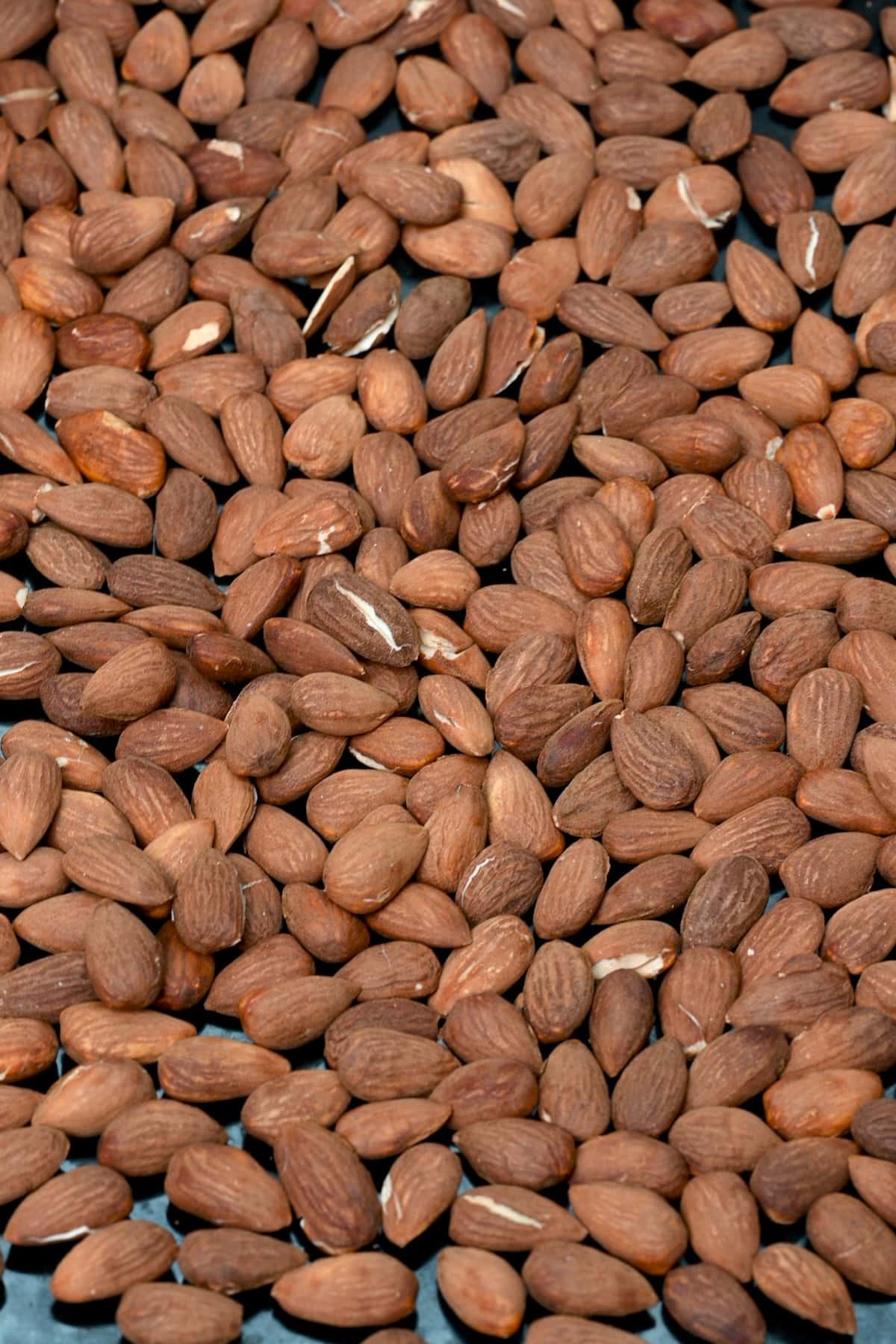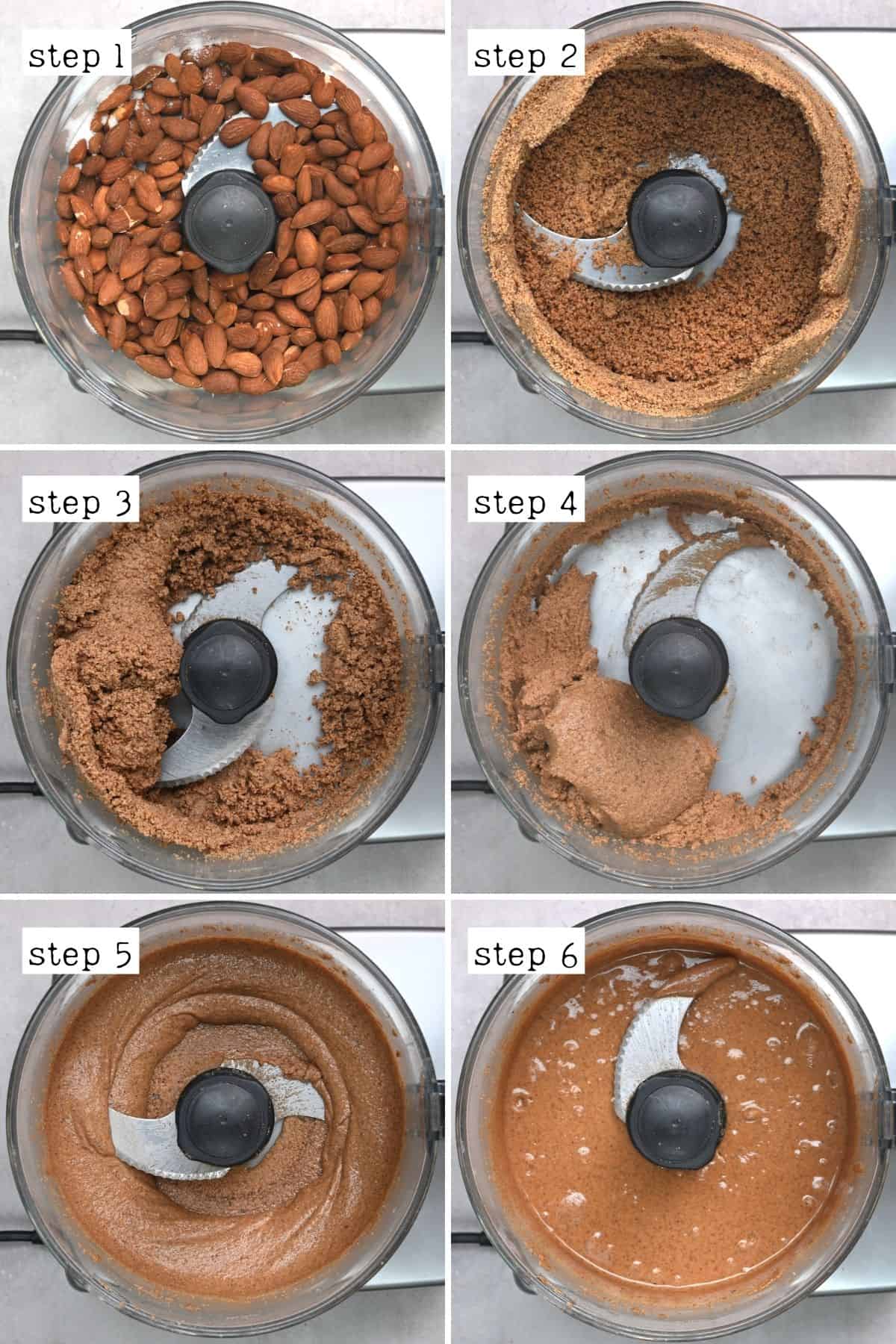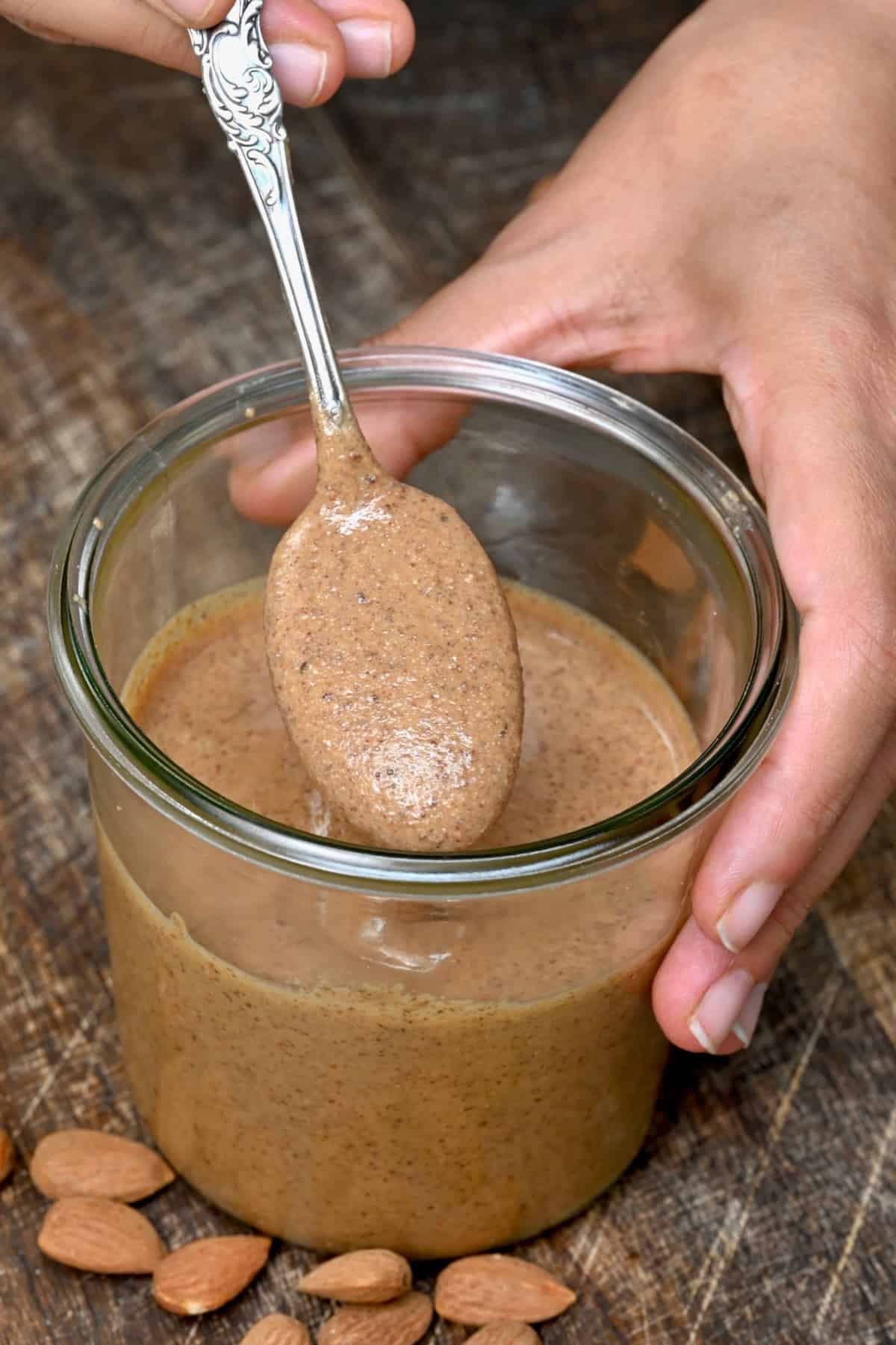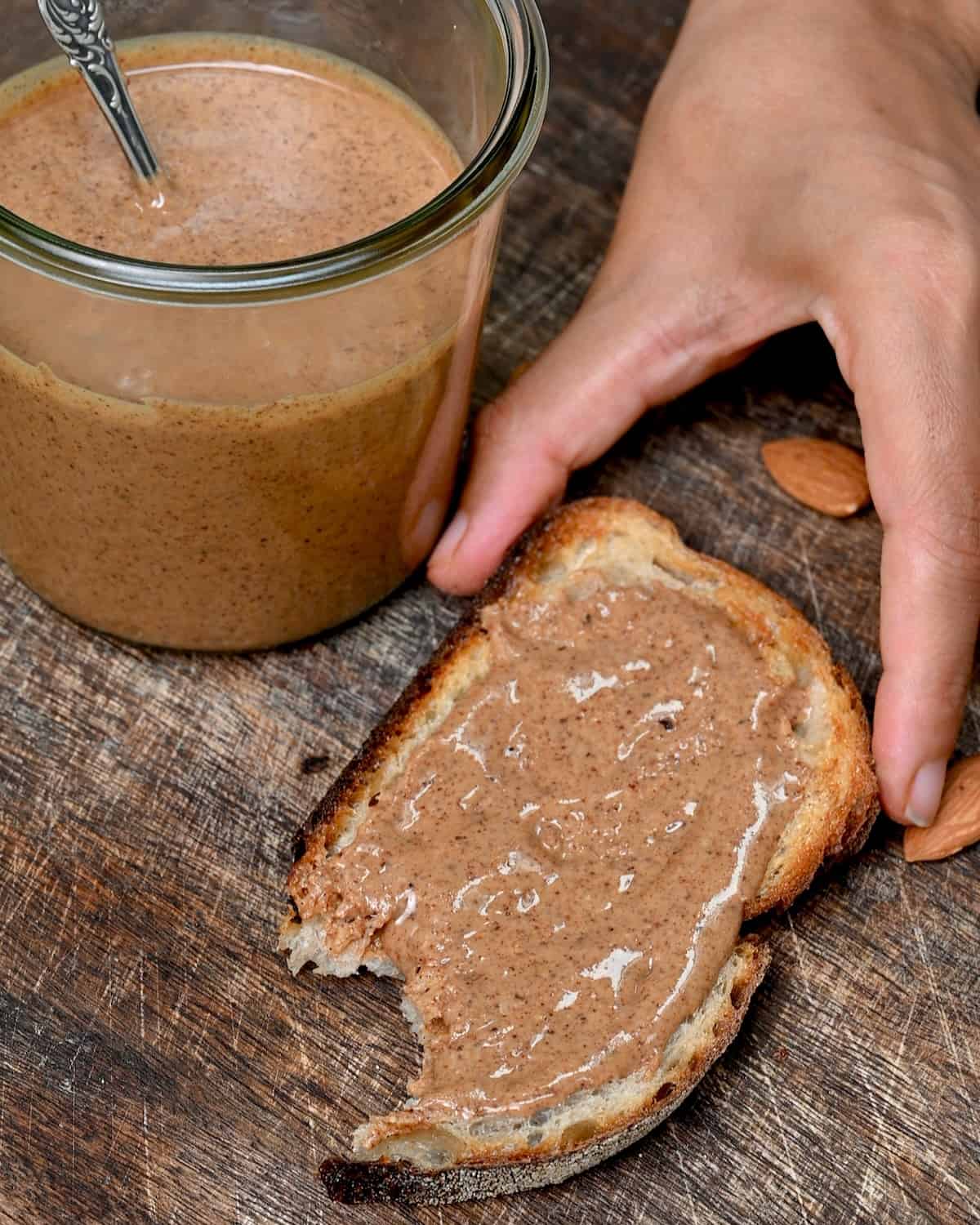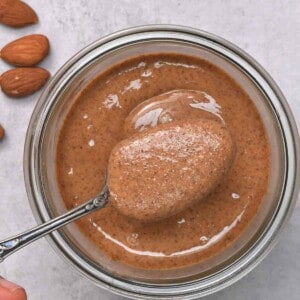Almond nut butter is a paste made from blitzed toasted almonds. Alongside the traditional peanut butter, roasted almond butter is one of the most popular spreads. It’s a healthy snack that’s delicious, super thick, creamy, and can be used in a myriad of ways. Made with just two ingredients – roasted almonds and a little sea salt – making this creamy almond butter recipe takes about fifteen minutes and a little elbow grease. Not to mention, it’s a fraction of the cost of a jar from the grocery store. Plus, there are no unwanted additives in the homemade version so it’s worth the effort to make your own almond butter.
What is homemade almond butter made of
As I mentioned above, you only need two ingredients:
Raw Almonds: It’s best to use unsalted and unroasted nuts for making a DIY almond butter. If you want, you can choose to use blanched raw almonds. Unpeeled almonds will make a spread with a deeper brown color and a slightly nuttier flavor while the blanched ones will result in a lighter color and slightly milder flavor. Salt: I would use any salt with smaller granules for ease in blending, like sea salt.
How to make homemade almond butter
Here’s how to make almond butter creamy and delicious.
Toast the almonds
Place the almonds on a baking sheet and toast in the oven for 8-10 minutes at 325ºF/165ºC. This brief toasting is necessary so the almonds release their natural oils as well as to bring out the flavor. Do this step even if you are using blanched almonds. Once your toasted almonds are ready, leave them to cool for about 10 minutes or until they are cool enough to handle.
Blend
Add the almonds to a food processor or blender, add a pinch of salt, and blend until at your desired consistency. The longer you blend, the runnier the butter will be. The process can take 10-15 minutes or longer depending on your machine and texture preference. As you blend, the almond butter will go through various stages: from powdery to clumpy and thick, then to grainy butter, and finally, to a smooth creamy texture. Also, make sure to give your food processor a break every few minutes so it doesn’t overheat. Use this time to scrape down the sides of the blender. Once you achieved your desired consistency, pour the almond butter into a clean glass container or a jar. Make sure it’s cooled down completely before closing the lid.
Almond butter recipe tips
Use fresh raw almonds: For the best results and for butter that lasts longer, make sure to use fresh raw almonds that you roast yourself. Fresh almonds will also be easier to blend. Avoid over-roasting: The nuts will toast fairly quickly, so keep an eye on them to avoid burnt almonds which will have a bitter taste. Let them cool: Once roasted, give the almonds a few minutes to cool down before blending. Scrape down the blender jug: When you pause blending to give your machine a break, make sure to scrape down the sides and push the almond paste towards the blades. Blend to your desired texture: The longer you blend, the runnier it will be. Stop when you are happy with the texture. Season to taste: I prefer the natural almond taste and don’t usually add anything to it. However, you can sweeten or season to taste with maple syrup, vanilla, cinnamon, cocoa powder, est. Just add your extra ingredients halfway through blending so they get incorporated into the butter.
Ways to use almond butter
There are so many uses for it. Of course, there’s the classic use of almond butter as a spread on toast with a delicious berry jam. And here are some of my other favorite ways to use it:
With breakfast favorites: Dollop it into a bowl of oatmeal, overnight oats, yogurt parfaits, or smoothies. It is a great source of plant-based protein to start your morning. Snack with fruit & veggies: It works well with almost all fruit and vegetables. Try it with bananas, berries, dates, citrus fruit, celery, or carrots. It’s perfect for making stuffed dates too. Dipping sauce: Use it to make delicious nutty dipping sauce or salad dressing. Baked goods: Incorporate it into your favorite baked goods like cookies or banana bread. It’s also a great binder in my homemade granola bars. You can also add it to soups, salads, and more.
How to store homemade almond butter
Store it in a glass container or a jar in a cool dry place like a pantry or a kitchen cupboard for 3-4 weeks. Alternatively, keep it in the fridge for 2-3 months, if not even longer. However, keep in mind that almond butter can go bad. Look for a bad smell (chemical-y and sour), black or brown spots on the surface, mold, or an odd taste. If you notice any of these, it’s best to discard it.
How to soften almond butter?
To soften homemade almond butter, you can place the jar in a pot with water. Heat it over medium heat for a few minutes until it softens and melts. Alternatively, you can microwave it on HIGH for 10 seconds.
More homemade nut butters
Cashew Butter Walnut Butter Coffee Peanut Butter Spread Hazelnut Butter Pistachio Butter
If you try this homemade almond butter recipe, let me know how it goes in the comments below. I’d appreciate a recipe card rating and would love to see your recipe recreations – tag me on Instagram @Alphafoodie!
